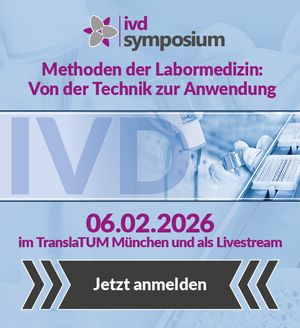Genomic mutations arise from both endogenous and exogenous sources with many somatic mutations accumulating over the lifetime of an organism. Not all genomic alterations are detrimental. However, cancer can arise from activating or inactivating mutations in particular genes that provide a proliferative or growth advantage to the cell.
Many cancer-driving genes have been discovered and classified as either oncogenic or tumor-suppressive based on their function in tumorigenesis. While targeted therapies have been developed to treat malignancies defined by some specific genetic alterations, many cancers remain incurable, and others resist therapy or relapse. Understanding tumor driving genes and their deregulated downstream signaling pathways are essential for accurate patient diagnosis, implementation of targeted treatments and accurate anticipation of therapeutic responses – cumulatively giving the best possible outcome for patients.
This review briefly introduces the topic of cancer, the identification of the original cancer-driving genes and the established and emerging technologies being utilized to identify and interrogate novel cancer-driving genes. Cancer researchers can also apply these technologies to understand the intricacies of hallmark pathways, test molecular targets of current therapies and identify novel drug targets.
Introduction
The scientific consensus is that cancer is a genomic disease whereby combinations of genetic alterations affect cellular pathways to drive cancer pathogenesis. Cells accumulate combinations of mutations, including tumorigenic gain-of-function mutations in oncogenes and mostly biallelic loss-of-function mutations in tumor-suppressor genes (TSGs). Over the past century, cancer researchers have steadily unveiled several critical cancer-driving genes to better diagnose, classify and treat numerous cancers.
Despite decades of research on critical genes that contribute to multiple cancers, such as TP53 (mutated in 50 % of all human cancers) and MYC (abnormally expressed in 70 % of all human cancers) [1], we still do not have a complete picture of their role in cancer. For example it is still not well understood what cooperating genes are critical for cancer establishment and maintenance, what downstream cellular pathways are deregulated, how those pathways interact, and how we can design targeted therapies to destroy the cancer.
Researchers are tackling these outstanding questions using an ever-expanding toolbox of technologies. One approach is high throughput deep sequencing of human tumors, which apply statistical analysis to identify commonly mutated putative driver genes. Many sequenced human tumors do not contain mutations in known driver genes, which suggests that many cancer-driving genes are yet to be discovered [2]. An alternate approach is functional genomic screens, which aims to determine the direct impact of genetic alterations on cellular and tumor phenotypes. A significant strength of functional genomic screens is the determination of cancer-driving genes that can be otherwise difficult to pinpoint from background passenger mutations identified by sequencing. The myriad of gene editing tools developed to perform functional genomic screens will be discussed later in this review.
Origins of cancer-driving genes
In 1914, Boveri foreshadowed that cancer growth ensues from incorrect ‘chromosomal’ combinations passed down to daughter cells subsequently causing abnormal cell growth [3]. Surprisingly, this early hypothesis holds if one replaces the word ‘chromosome’ with ‘gene.’ The road to discovering the first cancer-driving gene started in 1911 when Rous studied a transmissible sarcoma in hens [4]. It was not until 1970 that a gene called SRC was identified as the first oncogene. The avian retrovirus Rous Sarcoma Virus (RSV) carried a constitutively active copy of SRC (a gene dispensable for virus replication) to the infected host cells, driving cell proliferation. Viral-SRC lacks the autoregulatory tyrosine present in wildtype cellular SRC that is normally autophosphorylated, thereby rendering it inactive. Other oncogenes such as MYC and RAS were similarly identified from oncogenic viruses [5].
Boveri also predicted that, in addition to overexpression of growth genes, a second category of growth inhibitory genes might be repressed for tumor formation [3]. The first growth-inhibitory gene, now termed tumor suppressor gene, was identified as retinoblastoma (RB) in 1986. This discovery built on Knudson’s work studying children with either hereditary or acquired retinoblastoma. He proposed the “two-hit hypothesis” whereby carriers of a mutated RB gene develop retinoblastoma upon a second ‘hit’ – either another gene mutation or loss of the second RB allele [6]. TP53 was the second tumor suppressor gene identified, having been re-classified from an oncogene (further discussed in 'TP53: A unique tumor suppressor’, see page 106 ff.).
Most of the original cancer-driving genes were discovered from oncogenic viruses or were hereditary and potent drivers of cancer, for example, the BRCA genes in familial breast cancer. To identify cooperating mutations in the context of TP53 mutant cancers, or rare cancer-driving genes, an advancement of technology was required.
Introducing functional genomic screens in cancer
As previously mentioned, functional genomic screens aim to determine how genetic alterations modulate cancer phenotypes. Functional genomic screens are highly customizable depending on the cancer type of interest and the genetic modulation one wishes to induce. A general approach to performing functional genomics (Figure 1) includes delivering a genomic tool to the system that efficiently and robustly alters the expression or function of a gene and hence protein.



